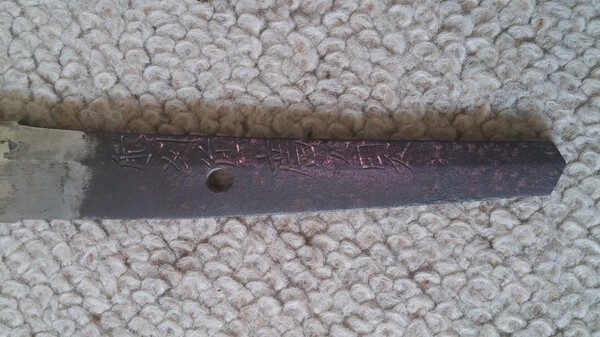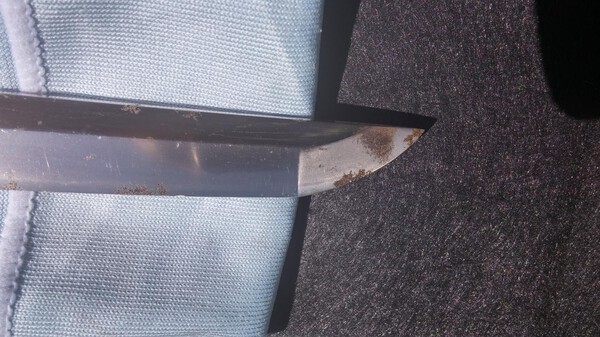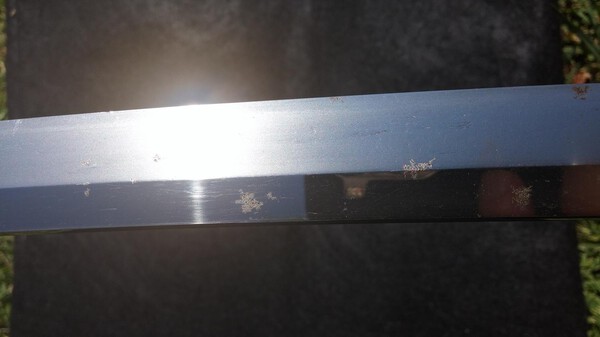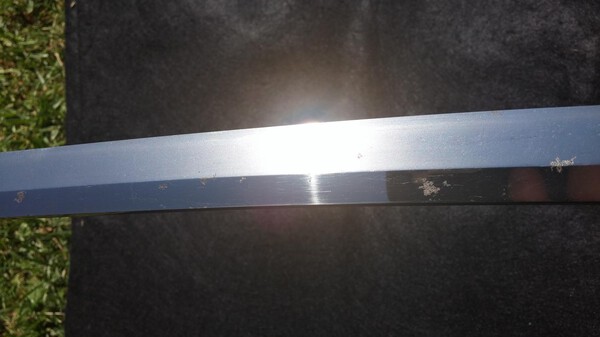-
Posts
1,402 -
Joined
-
Last visited
-
Days Won
11
Content Type
Profiles
Forums
Events
Store
Downloads
Gallery
Everything posted by Shamsy
-
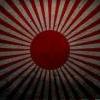
Year End Fund Raiser/raffle/etc
Shamsy replied to Brian's topic in General Nihonto Related Discussion
Hi Brian I will donate one ebook by Marcus. This forum is invaluable in my study and I'd like to contribute. -
I think they are both a must see. I'd love to see the sumo wrestling to! I think you'll have a ball honeymooning in Japan. Mr Martin is probably the best tour guide you could ask for. Thanks for the link John. He has also solved the question about commissions so an all in one stop.
-
Good morning everyone, I'm really not sure if this is the correct place to be posting, but I am after some advice regarding a potential trip to Japan I'm planning for next year. I'm specifically going with the aim of seeing and learning as much as I can about nihonto. I'd like to see as many swords as possible, visit workshops where swords are made and polished traditionally, see some of the famous sites with historical significance to the sword... you get the idea. While I found some of this with a simple google search, nothing beats the suggestions of locals or those 'in the know'. What are the must see/visit sites in Japan with a nihonto theme? Secondary to this, are there any smiths that produce custom order swords in the traditional method, basically a better momento than a tshirt. Thank you all!
-
Military Swords of Japan has these cord saya retention loops references, with pictures. Looks like a nice sword. Still a few good ones to find in Aus
-

Beware Of Fake Nco Copper Handle On Ebay.
Shamsy replied to Kai-Gunto's topic in Military Swords of Japan
Sure thing! http://www.ebay.com/itm/WWII-Japanese-Type-95-NCO-Gunto-Sword-Tsuka-handle-tsuba-repro-/151861243897?hash=item235ba2aff9:g:2gIAAOSw7aBVCaVK I'd actually like to buy one, as ebay went from having dozens of these listed to only a few almost overnight. A much better repro than usual, but again not correct from 1st pattern 95. If I have to pick I'd say the sword was one of the above handles with the rest of a Chinese sword. And yes it matters Brian :-P Japanese type 95 are my study and passion! -

Beware Of Fake Nco Copper Handle On Ebay.
Shamsy replied to Kai-Gunto's topic in Military Swords of Japan
The copper handle sells for about $20 from China which can be added to any real type 95 second pattern with an aluminum handle. They obviously found a real second pattern aluminum 95 and began copying it. They made an appearance on ebay not long ago in number. We have established beyond doubt it's not a copper handle though, so looking at it as a potential second pattern 95... The saya is an obvious repro with incorrect stamping and proportions. Paint has been covered, enough said. The sarute is correct for an aluminum handle, and the handle itself with the tsuba are fairly good. Fuchi stamps look wrong though. It's also got what looks like wood stain all over it. The blade has a Chinese kissaki. Very ill defined and ugly. The Grove can actually be in two distinct styles depending on arsenal, but this one is given away by being too wide. The serial numbers look pretty good. As has bee noted by several leading experts on Japanese gunto, it's becoming harder to distinguish between real and repro swords, especially type 95 which are all machine made. At best, this is a sword constructed with a mix of obviously Chinese and real parts, at worst the Chinese have improved some of the aspects of type 95 repro. A word of caution to newer collectors: the catch cry for fake swords used to include the words 'ancient, antique and sharp'. People have caught on and now it seems 'estate find, vet bring back, war trophy' are the new catch cry for questionable swords. -

Beware Of Fake Nco Copper Handle On Ebay.
Shamsy replied to Kai-Gunto's topic in Military Swords of Japan
That sword is so obviously fake a quick glance in any book should alert even the newest purchaser. Someone will be sadly disappointed. Maybe best not to list all of the errors, but the kissaki and stamping are enough to make me cringe. I can see... 7 errors in a quick glance. One so obvious I'm surprised no one mentioned it yet. The screw. Please no one elaborate on that. The Chinese do read these forums. -

Connoisseurs Guide To Japanese Swords
Shamsy replied to SAS's topic in General Nihonto Related Discussion
http://www.japaneseswordbooksandtsuba.com/store/books/b865-connoisseurs-book-Japanese-swords-kokan-nagayama Gray has a copy for $180. Great book. -

Nihon No Bi: Nihonto (The Japanese Sword)
Shamsy replied to Paul Martin's topic in General Nihonto Related Discussion
My copy arrived a few days ago. I didn't even consider that the book would be opposed in layout to western convention, so had a laugh at myself when I realised why the cover print was 'upside down'. On the book itself, I echo general sentiment it's nice to look through, especially as it showcases swords many of us would otherwise potentially never see. The translation was most welcome! -
Thank you for the assistance, always greatly appreciated John. I agree with you that it's likely later generation to, as I'd say the sword certainly looks of average make to me. I've corrected the spelling to and added some notes for my records.
-

The Reason Why You Should Buy Old Books- Masamune Found!
Shamsy replied to christianmalterre's topic in Nihonto
Ninja at the castle. Loved that extra! -
Good evening all, I've had this wakizashi for a few years now but purchased it primarily for the mountings. I've been a little curious about it, but always thought it had a rather 'cheap' feel. I'm under no illusions this is a hidden masterpiece. In fact I'll repeat my feeling this is a cheap and not terribly well made example. However, I'm new to nihonto and I only have one other example to compare it with. I've been reading and trying to learn the basics, so rather than a 'what is this' post, here is everything I have determined from my own modest attempt at appraisal. I'm sure there will be some mistakes and I'd appreciate correction on these, so I can hopefully avoid them in the future. A shinogi zukuri wakizashi. The measurements are as follows: Nagasa -54cm Sori - 1.5cm Kasane - 0.5cm Kissaki - 3cm Munemachi to tip of nakago is 14.5cm I'm not set on this assessment, but to me it appears to be koski zori, as the upper portion of the blade appears to be relatively straight. A Ko - kissaki and narrow upper part of the blade. Iorimune with gentle Orosi. The nakago is a standard shape with the nakago iris either kengyo or iriyama-gata maybe. The nakago still displays fairly strong katte sagari file marks. I really struggle with hada. I don't feel comfortable trying to make an assessment. I really need to see several examples together to recognize the difference and signs to look for. As previously mentioned, I only have two examples to compare. The same goes for other activitiesin the steel. The hamon is hoso-suguha and I think the boshi is ko-maru. The boshi temper line curves back to touch the tip of the ko - shinogi. One side is somewhat obscured by rust patch, but when I look at the other side, the upper part of the boshi curve seems to have... claw mark shapes pulling out of the boshi towards the yokote. I wasn't able to match this to anything I could find. In terms of age, I don't see this sword being terribly old, though I believe that flat black rust does suggest the blade is reasonably old. Unfortunately it has not been looked after and has several inactive rust patches, some light pitting, minor marks evident. I'd also suggest someone may have tried to clean it at one stage. If you can assist me with this blade I'd be very appreciative. There is a limit to what I can do having never met another person who would even know what nihonto means. It was a great experience to even talk to someone recently over the phone. I'm sure my butchering of the Japanese words was as painful for them as embarrassing for me. I'm also battling auto correct, so apologies if some of my words aren't correct. I had a good few photos but sadly most came out too large and I'll have to edit them. Thanks you all, Steve
-
Wayne and bill have made good guesses and there are a few good indication that should make one wary. The polished saya mouth cover and tsuba stand out as a means to cover the fact something has been recently altered. The characters carved on the saya mouth cover are also not consistent with other examples I've seen. Having said that, this is a known and perfectly legitimate pattern of saya retention. It's documented in Military Swords of Japan F&G. A hard call honestly. The kuchi-gane looks quite legitimate and the raised section would be somewhat problematic to manufacture I imagine. I'd go with legitimate, though the highly polished tsuba and unusual cover would prevent me purchasing.
-
Thank you all. I've compared a few examples and it looked good to me. Even so I make no claim at expertise in matching mei. Great to hear Eric is a reputable dealer. He certainly sounded like he knew what he was saying and he has some beautiful items.
-
Good evening all, There is a nice looking gendaito on eBay made by the smiths at the Yasukuni Shrine during WW2. I've compared the mei with those found in Yasukuni Swords (the book) and it seems a good match. However, there are many here which seem to have a real gift for matching the slightest quirks in signature. There are a few rather excellent examples of gendaito that are actually modern repro doing the rounds, so I'd like some opinions on whether this sword is a match (which I believe it is). I heed the warnings against eBay purchases and thought it prudent to seek advice. http://www.ebay.com/itm/WW2-YASUKUNI-SHRINE-GENDAITO-YASUNORI-1939-Japanese-Samurai-Sword-Tsuba-/281804413851?hash=item419cda1b9b Thank you in advance!
-
I remember seeing this one on ebay. It looked pretty good but I thought the price was a little high.
-
I cannot read Japanese, but both are not uncommon. A lot of Japanese officers surrendering swords provided personal details in the hope their swords would be returned. Tags are also rather easy to switch between swords, so it can be difficult to know if it is correctly matched. Tags consist of cloth (As yours), wooden and paper primarily, though I have seen a couple of other materials used.
-
No worries at all. I've had the opportunity to see a lot of unique examples and variants of these swords and have a few in my own collection for reference to. These were my first Japanese sword and are of special interest for me, so I enjoyed seeing this Spanish example.
-
A better example of a fake than the usual rubbish from China but still reasonably obvious one if you've ever seen a real type 95. In fact, I think you'll find this is a Spanish sword. They do pretty fair replica. Reasons: Kissaki is incorrectly shaped. Paint not period colors or age. The brass is not dulled with appropriate aged patina nor is it still showing any of the brown finish the IJA applied. No arsenal stamp on blade above habaki , which is wrong shape. Blade numbers incorrect font and outside correct range. Saya missing brass throat. Fuchi stamps are not correctly spaced, incorrect size, looks like only 2? and not matching anything known. The stamping is also not at all consistent with those they produced in terms of depth or quality. With better photography I could likely give you many more signs. I'll note there are a few variants out there inconsistent with the usual 95's. Different materials and oddities etc. This however is most definitely not one. Sorry for the bad news!
-
Felt it is! As to the original post, a Google search of acrylic or perspex sword stand will bring up some cheap but effective options. Also, some of the designs are made with two 'seperate' stand sections, so could be made narrow or wide as needed. They also come in several sizes. If you are happy to use a material other than wood of course.
-
In terms of storage, I keep my swords in a small room and set desiccant materials around. They're called 'Moisture Hippo's' but basically a plastic pot with desiccant that draws moisture out of the air, usually made for closets or small spaces. Alternatively, there is a product which is called Zerust. It's a chemical agent that permeates the air and prevents rusting. Quite safe, though reasonably expensive. Worth it for safeguarding your sword collections.
-
Oh dear, it seems there's a few things to learn on material selection for me. Thanks Ed, leather is out. Maybe I'll just stick to the stands I bought, since surely the wood selected for those will be suitable.
-
Hi Ben., Yes, that's a standard type 98 tsuba. Because the saya has the push buttons on the left side, it is appropriate to have a tsuba with a piercing on the left to. That way the leather loop with the female buttons which sits over the fuchi can pass through the tsuba and secure the blade to the saya. The seppa look good to, just add as many as needed to tighten the blade, or make a leather one. There are a few variants in type 98 tsuba, so I assume you're just asking if that is the right one. Disclaimer : not a great first pic for res, but it looks like the three buttons on the right are for combat cover and there are two male on left. That's what I see anyway on the small screen.
-

Opinions..what Do We Have Here?
Shamsy replied to Brian's topic in Auctions and Online Sales or Sellers
Other than a few people trolling, discussion seems pretty respectful at this stage. It's almost like watching a soap unfold.



